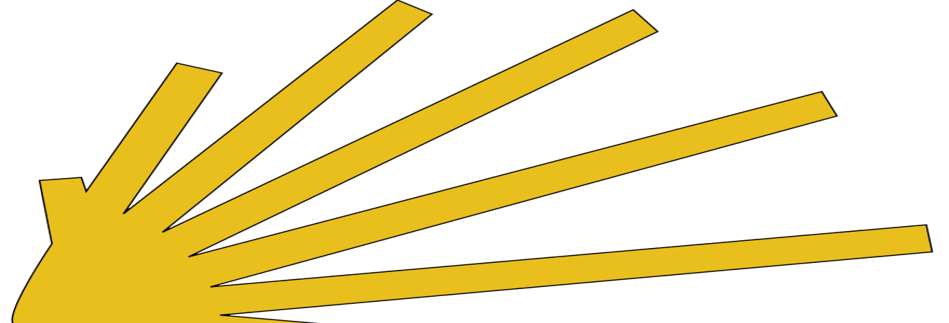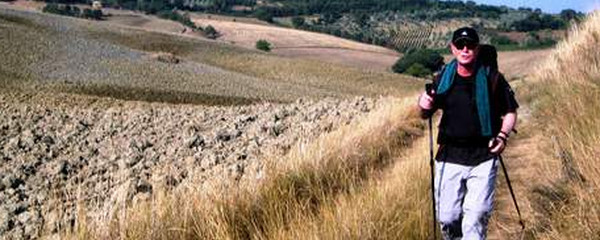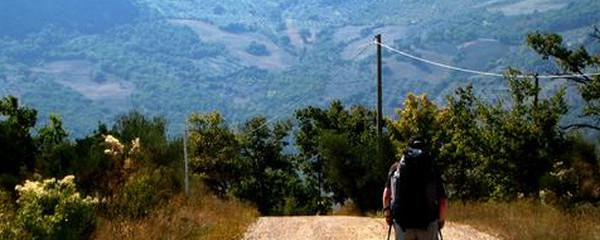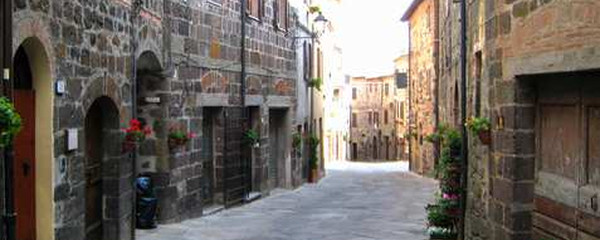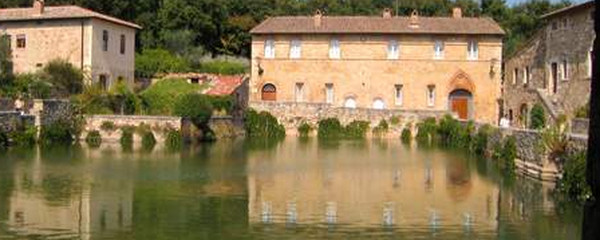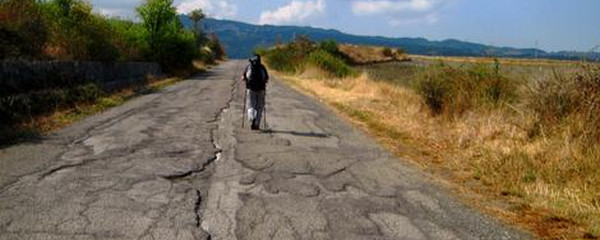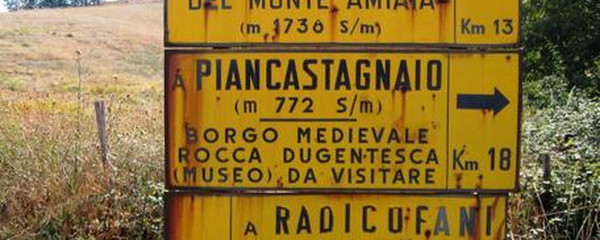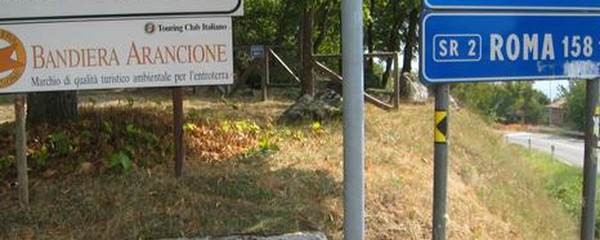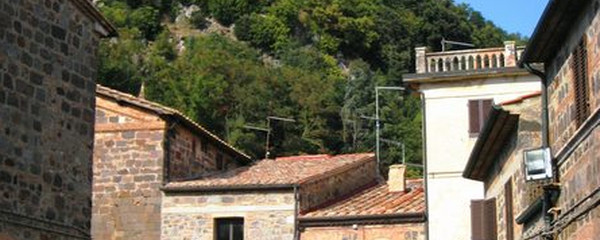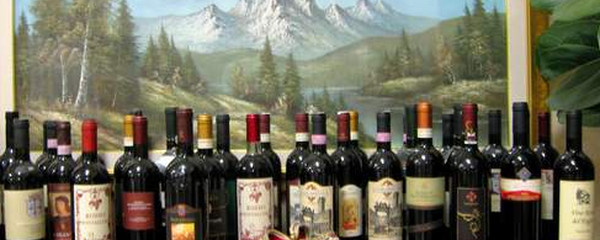Navigation

ein traumhafter Wandertag
Shortly after starting on the first peak, we get to a village named Vignoni Alto. From here, we descend to the valley of the river Orcia. Down there, we will encounter a real curiosity. The village «Bagno Vignoni» is a health resort, and as you can conclude from the name, it has to do with bathing. They do have a hot spring and bathing is not in a hotel nor in a modern pool, but in an antique basin. This basin substitutes what is usually a central plaza in a village.

Abstieg ins Tal der Orcia
After an extensive hike within the «Area Naturale Val d'Orcia», we finally reach Radicofani, a Middle Aged village on a mountain, dominated by the Radicofani castle on a further peak. Towards the end of the 13th century, Ghino di Taco, a man banished from Siena, acted here as a knight robbing rich travellers, and he was much admired by the local population for doing that. Probably, pilgrims then were not so much exposed.
Note(s)
The «Via Francigena» is one of the 3 main christian pilgrimage trails of the Middle Ages, the main axis leading from Canterbury to Rome. This documentation currently covers the most frequented section from Lausanne to Rome.
Anmerkungen
Die «Via Francigena» ist einer der 3 christlichen Pilgerwege des Mittelalters, dessen Hauptachse von Canterbury in England nach Rom führt. Diese Dokumentation umfasst vorerst den Abschnitt von Pontarlier nach Rom
Tipp des Autors
Die Etappen sind in dieser Dokumentation Vorschläge, die jeder Pilger seinen Wünschen anpassen kann. die technischen Daten betreffen aber immer die Annahme, diese Etappen würden jeweils an einem Tag absolviert.
Orte entlang des Weges
San Quirico D'Orcia - Vignoni - Bagno Vignoni - Fiume Orcia - Podere Liti - Castiglione D'Orcia - Acquasalsa - Torrente Vellora - Chiesa di San Pellegrino alle Briccole - Torrente Rofanello - Torrente Formone - Monte Nebbiali - Poggio Sassetta - Commune di Radicofani - Radicofani
